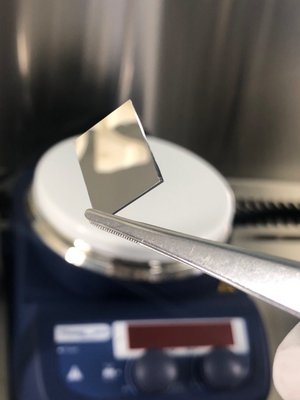Welcome to the CITRES project
The project CITRES “Chemistry and Interface Tailored lead-free Relaxor thin films for Energy Storage capacitors” is an ERC Consolidator Grant (GA. 817190), which started in April 2019 and ends in December 2024.
The goal of CITRES is to design novel dielectric capacitors for energy storage applications with high power and energy density based on relaxor thin films.
Energy storage units for energy autonomous sensor systems for the Internet of Things (IoT) must possess high power and energy density to allow quick charge/recharge and long-term energy supply. Current energy storage devices cannot meet those demands: Batteries have large capacity but long charging/discharging times due to slow chemical reactions and ion diffusion. Ceramic dielectric capacitors – being based on ionic and electronic polarisation mechanisms – can deliver and take up power quickly, but store much less energy due to low dielectric breakdown strength (DBS), high losses, and leakage currents. For this reason, they are also not suitable to withstand high voltages, which prevents their use as switching capacitors for power electronics (e.g. in electric vehicles).
CITRES aims to overcome those issues by using relaxor compositions in form of thin films:
- Thin film processing allows obtaining low porosity and defects, thus enhancing the DBS and allowing high-voltage operation.
- Slim polarisation hysteresis loops, intrinsic to relaxors, allow reducing the losses. If the dielectric permittivity is maintained high, high energy density can be achieved. At the same time, leakage currents must be minimised. These aspects are controlled by the amount, type and local distribution of chemical substituents in the relaxor lattice, whereas the leakage current depends also on the chemistry of the electrode metal.
In CITRES, we will identify the influence of substituents on electric polarisation (slim loop and permittivity) from atomic to macroscopic scale by combining multiscale atomistic modelling with advanced structural, chemical and electrical characterization methods on several length scales both in the relaxor material bulk and at interfaces with various electrodes. This will allow for the first time the design of energy storage properties of relaxor thin films by chemical substitution and electrode selection.
The ground-breaking nature of CITRES resides in the design and realisation of relaxor thin film-based dielectric capacitors with better energy storage performances than supercapacitors and batteries, thus enabling energy autonomy for IoT sensor systems and applications in the power electronics field.



